From eleven to nineteen environmental impact categories, current status
The Assessment Method was given a major overhaul in 2020. The SBK Environmental Performance Assessment Method for Buildings and Infrastructure projects was replaced this year by the first version of the Environmental Performance Assessment Method for Construction Works.
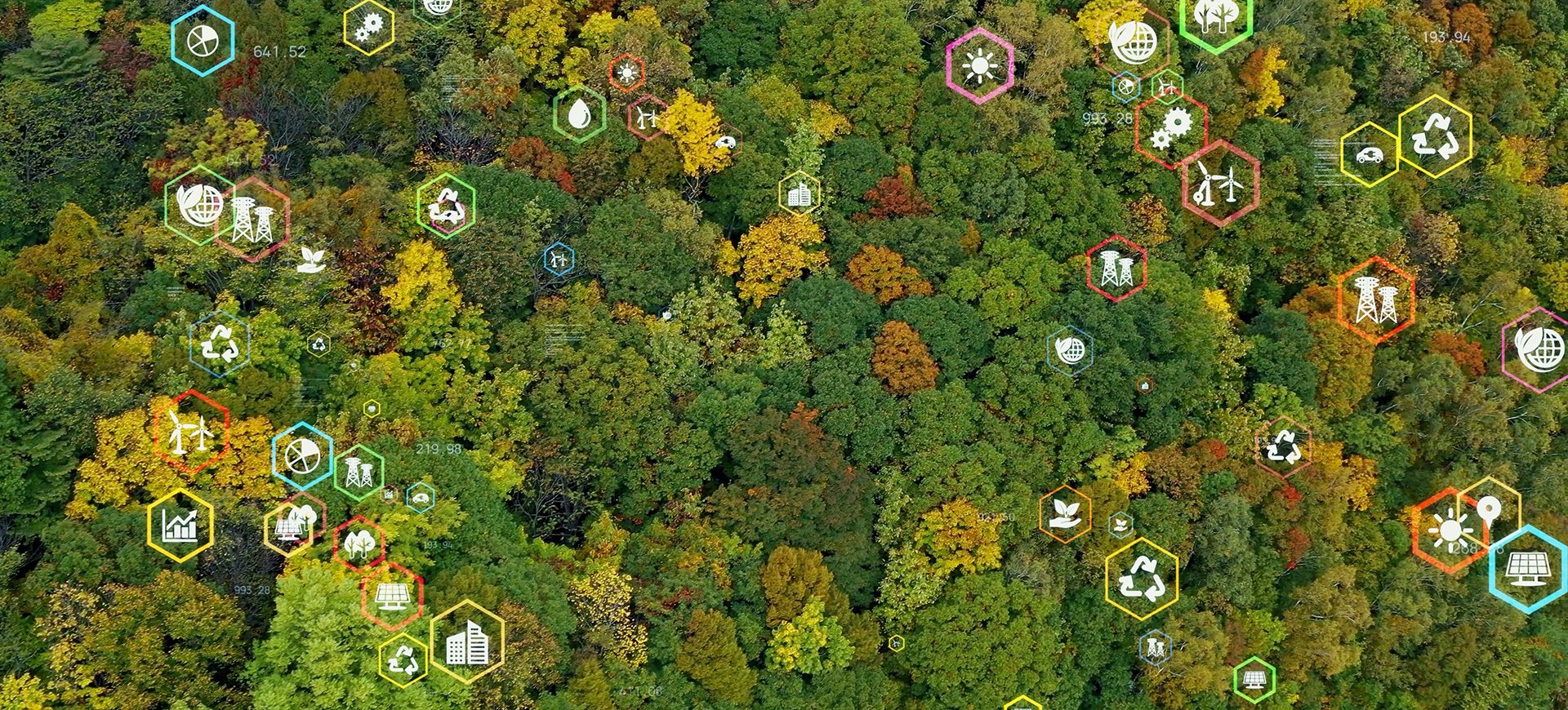
 The Environmental Performance Assessment Method for Construction Works (we are now working with version 1.1 and this will hereafter be referred to as the Assessment Method) underwent several important changes as a consequence of the changes to EN 15804, the European standard that forms the foundation for the Dutch Assessment Method.
The Environmental Performance Assessment Method for Construction Works (we are now working with version 1.1 and this will hereafter be referred to as the Assessment Method) underwent several important changes as a consequence of the changes to EN 15804, the European standard that forms the foundation for the Dutch Assessment Method.
New set of environmental impact categories
The most important change was the adjustment to determining environmental impact categories including acidification, eutrophication, summer smog, human toxicity and ecotoxicity. With EN 15804+A2:2019, these are now based on up-to-date scientific methods and are in line with the Product Environmental Footprint (PEF). This method embraced has been by the European Commission to determine the environmental performance of all products and therefore also applies to construction products. It led to the introduction of a completely new set of environmental impact categories. While the old set had eleven environmental impact categories, the new set has nineteen categories. In comparison with the old set, the new set is divided into sub-indicators, and indicators have been added. See set 1 and set 2 in the tables below.
The new categorisation and expansion of categories has consequences for the environmental profile (the sum of all environmental impacts) of the construction products and materials being assessed. The environmental profile change also changes the ECI score of the construction material or product, as the ECI is a numerical representation of the environmental profile.
Two sets simultaneously
The above means that all environmental declarations and basic profiles in the National Environmental Database must be reviewed. They need to be reassessed and recalculated. The conversion would be less complex if the NMD only comprised category 3 environmental decalarations managed by Stichting NMD. But as well as the category 3 decalarations, there are also category 1 and 2 declarations from companies, suppliers and sectors. These environmental declarations have a validity of five years and may not be removed from the NMD in the interim. For these environmental declaration owners, the conversion to the new set has considerable, labour intensive and financial implications. The conversion could therefore not be realised from one day to the next. Stichting NMD therefore decided to include both the old set and new set of environmental impact categories in the Assessment Method. The old set was designated as ‘set 1’, while the new set was given the name ‘set 2’. When the Assessment Method came into effect on 1 January 2021, it became mandatory to provide two sets of environmental data, one based on EN 15804+A1 (set 1) and one based on EN 15804+A2 (set 2).
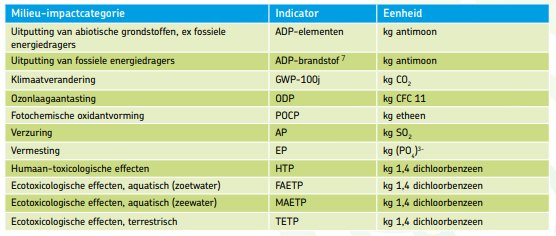
Table: Set 1, environmental impact categories based on EN-15804+A1
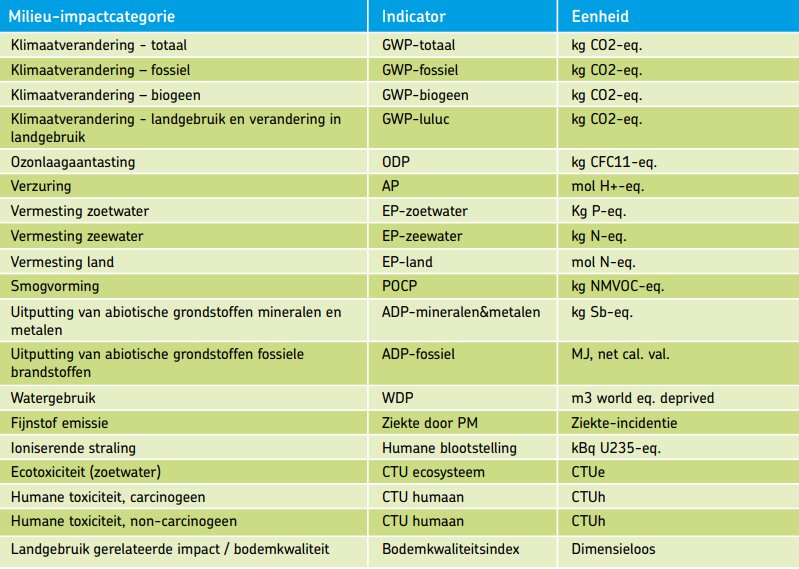
Table: Set 2, environmental impact categories based on EN-15804+A2
Transitional arrangement
There were also technical problems in converting certain raw materials and semi-finished products where the basic profiles did not comply with the new Assessment Method. Examples of this included concrete and wood. For concrete, the cement profile did not meet the new Assessment Method. The environmental declarations for sawn wood and for dried wood also did not comply. A year-long transition arrangement applied to these products. The arrangement has now been extended to 31 March 2023.
Acceleration campaign
The Stichting has established a compensation scheme to encourage owners of environmental declarations and basic profiles to update their data and bring these in line with set 2. The ‘Acceleration campaign’ was used for companies and sector associations that had based their environmental data on set 1 and whose environmental declarations and basic profiles were still within the five-year validity period. In total 341 category 1 and 2 environmental declarations needed to be updated with set A2.

Until now 227 environmental declarations have been registered for the acceleration campaign
The acceleration campaign was launched in two rounds. The first round focused on organisations that published their envrironmental declarations between 1 August 2017 and 31 December 2017. The second round focused specifically on organisations that published their envrironmental declarations between 1 January 2018 and 31 December 2020. The registration period for the acceleration campaign has now closed.
Data owners with envrironmental declarations from 2017 (round 1) were given until 31 December to update their envrironmental declarations to set A2. However, it emerged that the time available to implement the update was not sufficient. For this reason Stichting NMD decided to give owners of the envrironmental declarations and basic profiles until midnight on 30 April 2023 to update their data in the NMD. Until then, the old envrironmental declarations will remain active in the NMD.
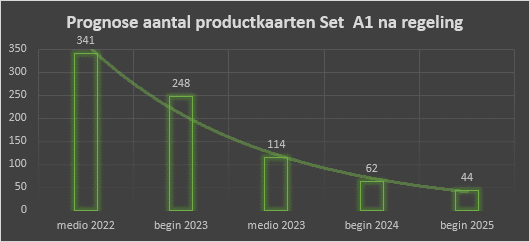
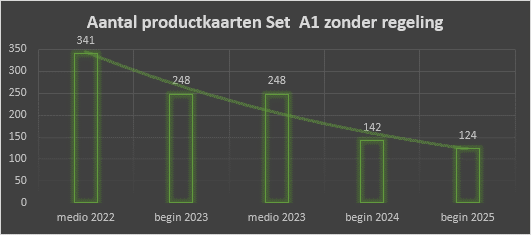
The final objective of the acceleration campaign is that set A2 will apply to all envrironmental declarations and basic profiles in the NMD. In the first quarter of 2023, Stichting NMD will conduct an analysis to determine whether it is physically possible to implement the environmental performance calculation using data based on set A2.
Weighting factors
The conversion from set 1 to set 2 is not yet complete. Until now, EPB and ECIs have been calculated at construction work level using the old set: set 1. A weighting factor needs to be established for each environmental impact category to express the environmental profile in a 1-point score (the EPB/ECIs).
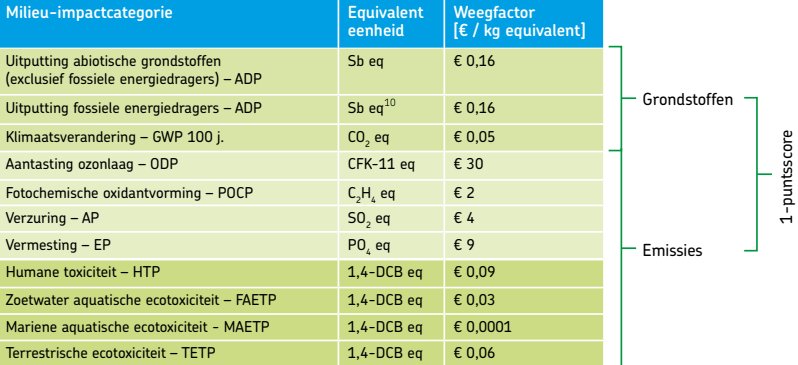
The weighting factors are based on a ‘shadow price’ that indicates which costs the government has available to neutralise the environmental impact of the construction work or product in question. The shadow price is therefore expressed in euro. The weighting factors for set 2 have not yet been determined. A study into a sound basis of the weighing set is underway. Stichting NMD will report on the study outcomes as soon as these are known. For now, the weighting factors for set 1 apply and the ECIs and EPB will be calculated using set 1.